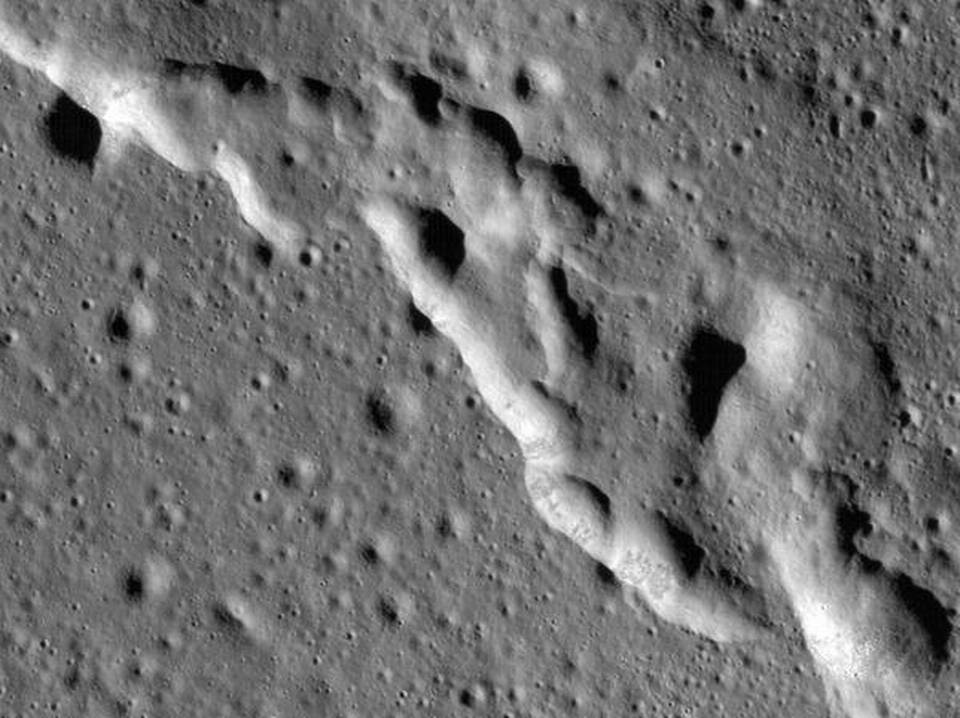According to an analysis of imagery captured by NASA’s Lunar Reconnaissance Orbiter (LRO) published on Monday that the Moon is steadily shrinking, causing wrinkling on its surface and earthquakes. Just as a grape wrinkles as it shrinks down to a raisin, the Moon gets wrinkles as it shrinks, researchers said.
A survey of more than 12,000 images revealed that lunar basin Mare Frigoris near the Moon’s north pole — one of many vast basins long assumed to be dead sites from a geological point of view — has been cracking and shifting.
Unlike our planet, the Moon doesn’t have tectonic plates; instead, its tectonic activity occurs as it slowly loses heat from when it was formed 4.5 billion years ago. This, in turn, causes its surface to wrinkle, similar to a grape that shrivels into a raisin.
Since the moon’s crust is brittle, these forces cause its surface to break as the interior shrinks, resulting in so-called thrust faults, where one section of the crust is pushed up over an adjacent section. As a result, the Moon has become about 150 feet “skinnier” over the past several hundred million years.
“Our analysis gives the first evidence that these faults are still active and likely producing moonquakes today as the Moon continues to gradually cool and shrink,” Thomas Watters, senior scientist at the Smithsonian’s National Air and Space Museum in the US, said. He further added, “Some of these quakes can be fairly strong, around five on the Richter scale.”
These fault scarps resemble small stair-step shaped cliffs when seen from the lunar surface, typically tens of metres high and extending for several kilometres.
The Apollo astronauts first began measuring seismic activity on the Moon in the 1960s and 1970s, finding the vast majority have occurred deep in the body’s interior while a smaller number were on its surface.
The analysis was published in Nature Geoscience and examined the shallow moonquakes recorded by the Apollo missions, establishing links between them and very young surface features.
“It’s quite likely that the faults are still active today,” said Nicholas Schmerr, an assistant professor of geology at the University of Maryland who co-authored the study.
He further added, “You don’t often get to see active tectonics anywhere but Earth, so it’s very exciting to think these faults may still be producing moonquakes.”

Leave a Reply